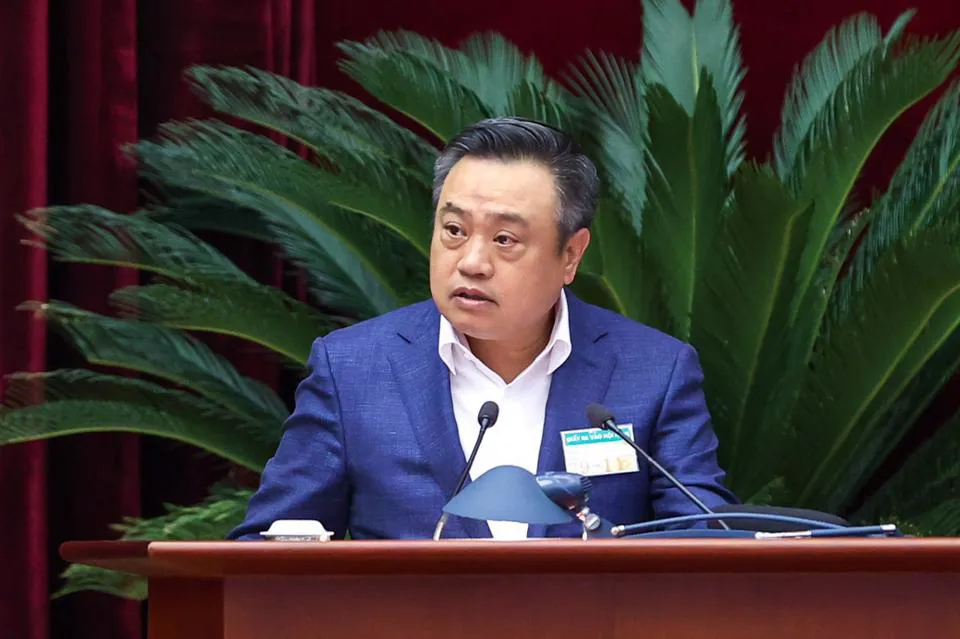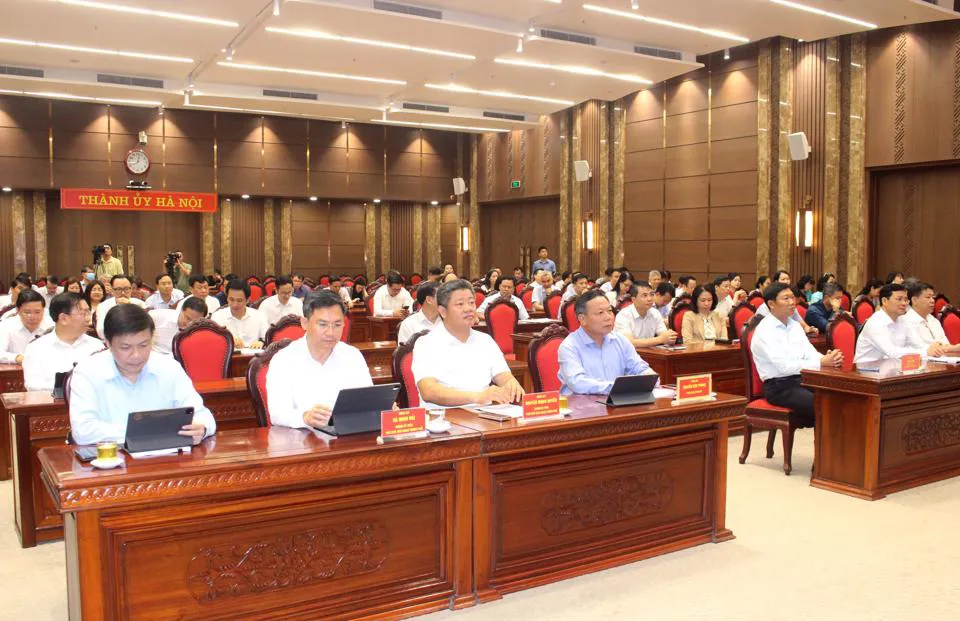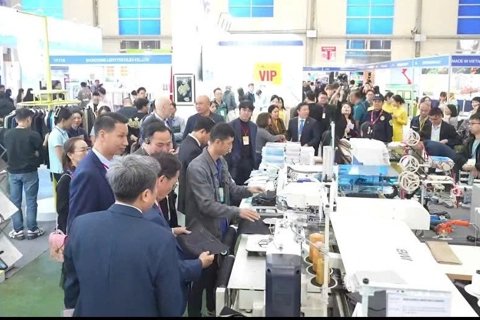Hanoi wants to make Red River Delta a Southeast Asia modern services hub
The capital city, home to the nation’s largest research institutes, universities, hospitals, and cultural centers, is set to become a financial, trade, services, and tourism center of the region and the world.
Hanoi will create a favorable legal environment for the operation of new business models under a green-, circular- and digital economy as part of its effort to build the Red River Delta to be a modern services center in Southeast Asia.
| Chairman of Hanoi People's Committee Tran Sy Thanh. Photos: Thanh Hai/The Hanoi Times |
Chairman of the Hanoi People’s Committee Tran Sy Thanh gave the remarks at the conference discussing the implementation of resolution No.30 of the Politburo issued on November 23 on socio-economic development and ensuring national security at the Red river delta until 2030, with a vision to 2045.
Thanh expected Hanoi to become a financial, trade, services, and tourism center of the region and the world, Haiphong as a global logistics hub, and Bac Ninh with a smart industrial base.
“Hanoi is now the center and driving force for the development of the Red River Delta, a strategic base in terms of politics, economy, culture, education, science-technology, environment, defense, and foreign affairs for the nation,” Thanh said.
The capital city with a population of nearly 10 million is home to the nation’s largest research institutes, universities, hospitals, and cultural centers, and a growth engine for the entire region.”
| Senior officials of Hanoi at the conference. |
Action plan
Under resolution No.30, Hanoi is envisioned to have a development level similar to the capitals of the region’s developed countries by 2030, a global city by 2045 with high living standards and a GRDP per capita of over $36,000.
“Along with resolution No.15 of the Politburo on the vision for Hanoi’s development until 2030, Resolution No.30 would serve as a political basis for Hanoi to map out long-term strategies for the future of Hanoi in the context of the Red River Delta,” Thanh said.
To ensure the successful implementation of resolution No.30, Thanh called for the Party, Government, and National Assembly to soon issue a working mechanism on inter-provincial linkage, including the pilot of extraordinary policies with high international competitiveness to fully tap into the potential of the Red River Delta.
Especially it highlights the connection among regions, namely the economic triangles of Hanoi – Haiphong - Quang Ninh, the economic corridor of Kun Ming (China) – Lao Cai – Hanoi – Haiphong – Quang Ninh, or the corridor of Nanning (China) – Lang Son – Hanoi – Haiphong – Quang Ninh.
In the immediate future, the city’s major stressed the necessity for the Government to soon complete the review process of the Capital Law and the overall construction planning for Hanoi.
As part of the ongoing economic restructuring, Hanoi proposed the Government continue supporting cities/provinces in the Red River Delta in promoting economic sectors associated with the use of a high-quality workforce and forming a value chain in the region.
Culture in sustainable development
Thanh also mentioned the significance of cultural development to reflect the historical values of a 1,000-year-old city.
In the past months, the Hanoi Party Committee has issued a resolution on the development of the cultural industry in the city in the 2021-2025 period, with a vision to 2030, aimed at creating comprehensive breakthroughs in Hanoi’s cultural industry.
From their practical experience, Thanh suggested an overall solution from the national level to ensure a balance between historical and cultural value preservation and socio-economic development. “This is key for culture to become a new driving force for growth,” Thanh said.
Thanh also noted the importance of soon approving the Red River Delta planning for the 2021-2030 period, with a vision to 2050, considering this an essential step for localities in the region to map out their respective development visions.
"Hanoi and related cities/provinces are determined to complete the Ring Road No.4 project before 2027 and prepare for the construction of Ring Road No.5 before 2030,” Thanh added.
Regarding science-technology and environmental protection, Thanh called for Government agencies to carry out startup and innovation center projects in Hanoi, Haiphong, and Quang Ninh, along with the completion of the Hoa Lach Hi-tech park and the national innovation center in the capital.
“Hanoi would continue to work with other localities in environmental protection, especially in maintaining the network of rivers and lakes and responding to climate change,” he said.
The Red River delta consists of 11 provinces/cities under central administration and is divided into the Northern Red River delta sub-region of Hanoi, Haiphong, Quang Ninh, Vinh Phuc, Bac Ninh, Hai Duong, Hung Yen; and the Southern Red River delta sub-region of Thai Binh, Ha Nam, Nam Dinh, and Ninh Binh. |












